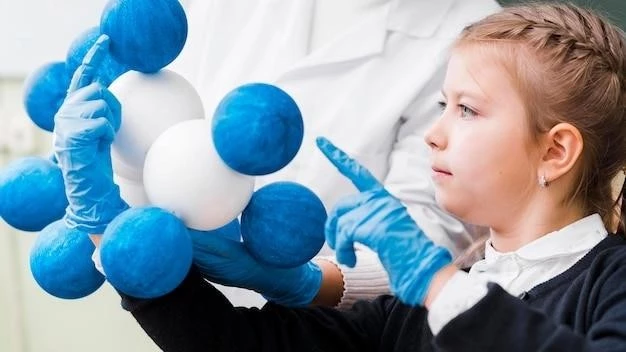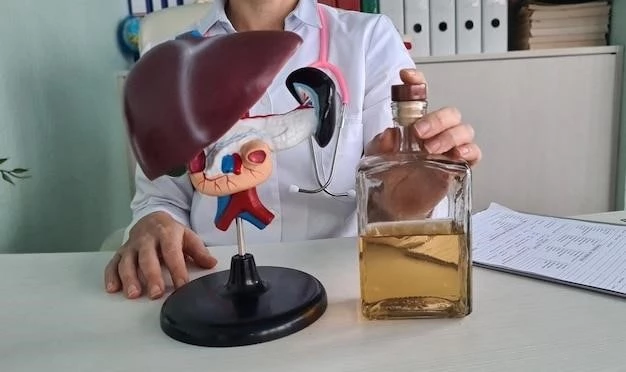Introduction
Müllerian derivatives-lymphangiectasia-polydactyly syndrome is a rare genetic disorder affecting the female reproductive system, lymphatic system, and limbs. It manifests with unique malformations and has been the subject of recent medical investigations.
Overview of Müllerian derivatives lymphangiectasia polydactyly
Müllerian derivatives-lymphangiectasia-polydactyly is a rare genetic disorder that affects the female reproductive system, lymphatic system, and limbs. It involves the persistence of Müllerian duct derivatives, intestinal lymphangiectasia, and postaxial polydactyly. The syndrome presents with unique malformations such as hypertrophied alveolar ridges, redundant nuchal skin, and cryptorchidism. Renal anomalies, protein-losing enteropathy, and hepatomegaly are commonly observed. Recent studies have focused on understanding the genetic basis and clinical manifestations of this complex syndrome.
Clinical Presentation
The clinical presentation of Müllerian derivatives-lymphangiectasia-polydactyly syndrome includes unique malformations in the female reproductive system, lymphatic system, and limbs. Characteristics may involve hypertrophied alveolar ridges, redundant nuchal skin, and postaxial polydactyly. Additional manifestations include renal anomalies, intestinal lymphangiectasia, and cryptorchidism. Understanding these clinical features is essential for accurate diagnosis and management strategies.
Common symptoms and characteristics
Common symptoms of Müllerian derivatives-lymphangiectasia-polydactyly syndrome include hypertrophied alveolar ridges, redundant nuchal skin, postaxial polydactyly, renal anomalies, intestinal lymphangiectasia, cryptorchidism, and facial dysmorphism. The genetic disorder is characterized by the persistence of Müllerian duct derivatives, protein-losing enteropathy, hepatomegaly, and unique genital anomalies. Notable cases have shown unique malformations such as hypertrophied dental alveolar ridges and microphallus. Understanding the spectrum of symptoms is crucial for accurate diagnosis and management of this complex syndrome.

Genetics and Inheritance
The genetics of Müllerian derivatives-lymphangiectasia-polydactyly syndrome involve rare genetic mutations impacting the female reproductive system, lymphatic system, and limb development. Inheritance patterns show complexities related to the transmission of genetic anomalies. Understanding the underlying genetic basis is crucial for diagnosis and genetic counseling.
Understanding the genetic basis of the disease
The genetic underpinnings of Müllerian derivatives-lymphangiectasia-polydactyly syndrome involve rare mutations impacting the development of the female reproductive system, lymphatic system, and limbs. These mutations result in the persistence of Müllerian duct derivatives, intestinal lymphangiectasia, and postaxial polydactyly. Research has focused on unraveling the intricate genetic mechanisms that contribute to the manifestation of this complex syndrome, shedding light on its inheritance patterns and implications for diagnosis and treatment.
Diagnosis
Diagnosing Müllerian derivatives-lymphangiectasia-polydactyly involves thorough clinical evaluation, imaging studies, genetic testing, and consultation with specialists in various fields. Identifying the characteristic malformations and genetic markers is essential for accurate diagnosis and determining the appropriate treatment plan.
Methods for diagnosing Müllerian derivatives lymphangiectasia polydactyly
Diagnosing Müllerian derivatives-lymphangiectasia-polydactyly involves a multidisciplinary approach, including clinical evaluation, imaging studies (ultrasound, MRI), genetic testing (molecular testing for specific mutations), and consultation with specialists like geneticists, radiologists, and pediatricians. Detection of unique malformations such as hypertrophied alveolar ridges, intestinal lymphangiectasia, and postaxial polydactyly is crucial for accurate diagnosis and appropriate management.

Treatment Options
Treatment for Müllerian derivatives-lymphangiectasia-polydactyly syndrome involves a multidisciplinary approach addressing the specific manifestations of the disorder. Management strategies may include surgical interventions to correct genital anomalies, dietary modifications for lymphangiectasia, and supportive care for associated complications. Collaborating with specialists to tailor treatment plans to individual needs is essential for improving quality of life and addressing long-term outcomes.
Available treatments and management strategies
Treatment options for Müllerian derivatives-lymphangiectasia-polydactyly syndrome involve a comprehensive approach tailored to the individual’s specific needs. Management may include surgical interventions to address genital anomalies, dietary modifications to manage lymphangiectasia, and supportive care for potential complications. Collaboration with a specialized healthcare team is essential to develop a personalized treatment plan that optimizes quality of life and addresses the various aspects of this complex genetic disorder.
Prognosis
The prognosis of Müllerian derivatives-lymphangiectasia-polydactyly syndrome varies depending on the severity of the malformations and associated complications. Early diagnosis and appropriate management can help improve outcomes and quality of life for affected individuals. Research efforts continue to advance our understanding of this rare genetic disorder and its long-term effects.
Outlook and long-term effects of the disease
The long-term outlook for individuals with Müllerian derivatives-lymphangiectasia-polydactyly syndrome depends on the severity of the condition and associated complications. Early intervention and appropriate management can help mitigate potential long-term effects, supporting better quality of life and overall well-being. Continued research into this rare genetic disorder aims to improve prognosis and enhance treatment strategies for affected individuals.
Research and Studies
Current research on Müllerian derivatives-lymphangiectasia-polydactyly syndrome focuses on understanding the genetic underpinnings, associated clinical manifestations, and potential treatment advancements. Ongoing studies aim to shed light on the complexities of this rare genetic disorder, contributing to improved diagnostic accuracy and therapeutic approaches.
Current advancements and ongoing research efforts
Researchers are actively investigating the genetic underpinnings and clinical manifestations of Müllerian derivatives-lymphangiectasia-polydactyly syndrome to enhance diagnostic approaches and develop targeted therapies. Ongoing studies aim to unravel the complexities of this rare genetic disorder, paving the way for more effective treatment strategies and improved outcomes for affected individuals.
Support and Resources
Access support organizations and resources dedicated to individuals affected by Müllerian derivatives-lymphangiectasia-polydactyly syndrome. These groups provide valuable assistance, guidance, and information for patients and their families navigating this rare genetic disorder. Seek out these support networks for additional help and insights in managing the complexities of the condition.
Organizations and assistance for individuals with the disease
There are support organizations and resources available for individuals with Müllerian derivatives-lymphangiectasia-polydactyly syndrome, providing valuable assistance, information, and guidance. These organizations play a crucial role in offering support to patients and their families, helping them navigate the challenges associated with this rare genetic disorder. Seeking help from these organizations can offer valuable insights and help individuals manage the complexities of the condition.
Case Studies
Explore documented cases of individuals with Müllerian derivatives-lymphangiectasia-polydactyly syndrome, highlighting unique clinical presentations and outcomes. These cases offer valuable insights into the complexities of the disorder and contribute to our understanding of its manifestations and management.
Notable cases and their outcomes
Documented cases of individuals with Müllerian derivatives-lymphangiectasia-polydactyly syndrome highlight the intricate patterns of malformations and potential outcomes associated with this rare genetic disorder. Understanding these cases provides valuable insights into the clinical manifestations and challenges faced by affected individuals and their families.
Prevention
Implementing preventive strategies for Müllerian derivatives-lymphangiectasia-polydactyly involves genetic counseling, prenatal screening, and early detection methods. These measures can help identify the condition early, allowing for timely interventions and personalized care plans to manage the disorder effectively.
Strategies for prevention or early detection
Implementing preventive strategies and early detection measures for Müllerian derivatives-lymphangiectasia-polydactyly involve genetic counseling, prenatal screening, and close monitoring. Early identification of characteristic malformations such as postaxial polydactyly and lymphatic anomalies can aid in timely interventions and personalized management plans to address the complexities of this rare genetic disorder;
Complications
Müllerian derivatives-lymphangiectasia-polydactyly syndrome can lead to various complications such as intestinal lymphangiectasia, protein-losing enteropathy, renal anomalies, cryptorchidism, and facial dysmorphism. Timely intervention and management are essential to address these potential challenges effectively.
Possible complications associated with the disease
Complications associated with Müllerian derivatives-lymphangiectasia-polydactyly syndrome may include intestinal lymphangiectasia, protein-losing enteropathy, renal anomalies, cryptorchidism, and facial dysmorphism. Timely intervention and specialized care are vital for managing these potential challenges and improving the overall quality of life for affected individuals.
Impact on Quality of Life
Müllerian derivatives-lymphangiectasia-polydactyly syndrome significantly affects the quality of life due to complex malformations and associated complications. Managing these challenges is crucial for improving the well-being of individuals with this rare genetic disorder.
How Müllerian derivatives lymphangiectasia polydactyly influences daily life
Müllerian derivatives-lymphangiectasia-polydactyly syndrome significantly impacts daily life by presenting a range of malformations and complications, affecting various aspects of daily functioning, mobility, and overall well-being. Individuals and families may face challenges in managing the condition’s complexities, necessitating specialized care and support to navigate daily activities effectively.
Summarily, Müllerian derivatives-lymphangiectasia-polydactyly syndrome poses significant challenges due to its complex manifestations, requiring specialized care and support. Continued research and collaboration are essential for advancing diagnostic and therapeutic approaches for this rare genetic disorder.
Summarizing key points about the disease
Müllerian derivatives-lymphangiectasia-polydactyly syndrome is a rare genetic disorder impacting the female reproductive system, lymphatic system, and limb development. Characterized by unique malformations such as hypertrophied alveolar ridges, redundant nuchal skin, postaxial polydactyly, renal anomalies, and intestinal lymphangiectasia, this syndrome poses significant challenges to affected individuals and requires specialized care. Ongoing research aims to enhance diagnostic methods and treatment options for improved management of this complex genetic condition.
